Academia that prioritizes a western stamp of approval does social work a disservice.
Words by Vanessa Quon
Illustrations by Laila Amer

CONTENT WARNING: This article discusses topics of racism, violence, Islamophobia, colonial violence and generational trauma. There are mentions of abuse, residential schools and suicide
Sitting in a 10 Dundas East Cineplex theatre, Juliet Chapman watched as a row and a half of her fellow social work students walked out of her first-year politics class.
The professor had brought up Ryerson’s namesake, Egerton Ryerson, while giving a lecture about the colonization of Indigenous Peoples in Canada. Ryerson played an integral role in the creation of the residential school system in Canada, advocating for Indigenous children to be educated separately from white children at boarding schools. These schools ordered for the violent removal of thousands of Indigenous children from their families and communities in forcible attempts to assimilate them into colonial Euro-Canadian culture.
Many children experienced psychological, spiritual, physical and sexual abuse at the hands of “caregivers” at these schools. The long-term impact has left many residential school survivors facing heightened feelings of anger, anxiety, low self-esteem, depression, post-traumatic stress disorder and high rates of suicide, and more.
While giving background on Ryerson, the professor inferred that even though Ryerson did terrible things, the “good things” he did shouldn’t be dismissed.
While the professor spoke about Ryerson and residential schools, an Indigenous student sitting in the front row raised his hand. He started to describe the negative impacts of the residential school system on Indigenous Peoples, but the professor’s tone was dismissive in their response, trying to keep the conversation focused on politics. Chapman could tell some students were upset—faces were angry and she overheard some students saying things like, “I can’t believe he said that” and “that was so inappropriate of him to say.”
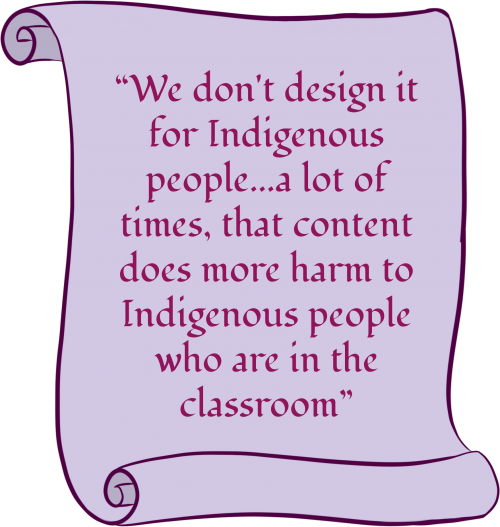
The Indigenous student was the first to walk out. Other students in the class followed suit. The professor, without addressing the students who walked out, called for a break. About half the students were missing when class resumed.
Chapman, now in her fourth year of the social work program, says she thinks the professor articulated his point in the wrong way and sees how what he said was harmful. “You can’t really say that if somebody does something good, it makes up for the 50 wrong things that they’ve done,” she says. “Especially if one of those things…has damaged an entire community.”
For some students at Ryerson, learning course content solely through a Eurocentric lens is a reality. Western ideas are often presented as the only legitimate way of knowing, which in turn dismisses contributions from Black, Indigenous and people of colour (BIPOC) in academia.
The content and resources that make their way into curriculums have often been founded in Eurocentric thought with a history that dates back to colonization, according to a University of New Brunswick study from 2019. These Eurocentric ideas are often given an academic “stamp of approval” and left unquestioned by faculty when taught to students in classroom discussions and assigned readings.
Ryerson’s social work program has made efforts to combat the centring Western knowledge in its classrooms, such as making Indigenous-focused classes mandatory and confronting Eurocentric ideas in class content with discussions. However, some racialized students in the program say they do not receive sufficient education in non-Western ways of knowing. Further, when non-Western content is taught, it’s usually presented in comparison to Eurocentric ideas. This can leave social work students unprepared to work in their upper year placements and future workplaces, since they lack the cultural awareness necessary to adequately combat the harmful white saviour narrative that is historically and continually perpetuated in the social work field.
Lynn Lavallée, a Ryerson social work professor and the strategic lead of Indigenous resurgence in the Faculty of Community Services, says that even the mandatory Indigenous-focused classes in the social work program don’t do the best job of teaching Indigenous ways of knowing.
The social work program is accredited by the Canadian Association of Social Work Educators, which requires mandatory Indigenous-focused courses for accreditation. Lavallée says the Indigenous teachings are factual, citing content about the residential school system and the incarceration and institutionalization of Indigenous peoples. However, the courses typically focus on negative narratives and fail to teach the amazing things that Indigenous people are doing today and have done in the past.
She notes that many Indigenous teachings in the program are designed to be taught to non-Indigenous students in particular. “We don’t design it for Indigenous people,” she says. “A lot of times, that content does more harm to Indigenous people who are in the classroom.”
Indigenous and other non-Western ways of knowing are rarely valued or respected on their own terms, but only gain value in relation to Western knowledge, according to a 2019 article in the journal Teaching in Higher Education. When Western individuals bring non-Eurocentric ways of knowing into Western spaces, they tend to seek approval for their generosity, according to the article.
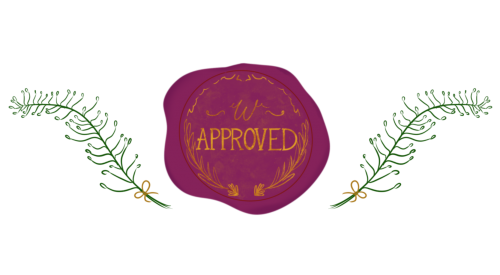
ringing Indigenous ways of knowing into academic spaces and positioning them as equal to other knowledge has been a goal for Lavallée throughout her academic career.
Lavallée, an Anishinaabek Qwe registered with the Métis Nation of Ontario, began working in Ryerson’s social work program in 2005. She remembers not having much control over what she taught. A lot of the Indigenous content was already planned, leaving her with little room to modify the teachings.
So when she got a free class due to an unplanned extra week in the term, she decided to teach her students about the North American Indigenous Games—a multi-sport event involving Indigenous North American athletes that have run irregularly since 1990. Lavallée decided to teach her students about them because she has a kinesiology degree and is involved in Indigenous sport grassroots across Canada.
She says when people think about Indigenous studies, they’re usually thinking about the Indian Act, legislation and supreme court rulings. But for a program such as social work, she says students should be learning about Indigenous identity in the present tense. “If you’re going to work with Indigenous people, you have to understand who they are, because colonization directly attacked our identity and it still is,” she says. “We’re still being erased.”
At the beginning of the school year in 2017, Lavallée left Ryerson to teach at the University of Manitoba (U of M) in a new position the university created: vice-provost of Indigenous engagement. She felt hopeful entering the position, but ended up resigning after a year and four months due to anti-Indigenous racism towards herself and other Indigenous students, faculty and staff.
She told the CBC that instead of being able to develop initiatives to support Indigenous students and fight systemic racism at U of M, “she found herself repeatedly forced to justify to senior administration why Indigenous initiatives are important.”
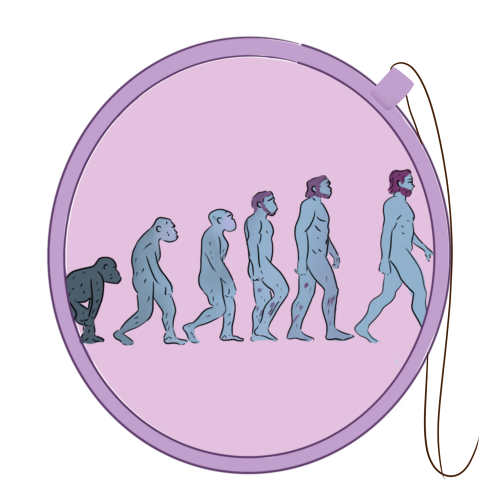
In response, Janice Ristock, provost and vice-president (academic) of U of M released a statement saying they respect Lavallée’s contributions and that U of M ”remains firm in its commitment to bring about transformations at the institutional level that will facilitate Indigenous achievement.”
Lavallée decided to return to Ryerson soon after, taking on her current role as strategic lead of Indigenous resurgence. After her experiences in Manitoba, she knew her efforts to bring Indigenous ways of knowing into the classroom had to be strategic. At Ryerson, Lavallée says her ability to teach is still currently limited as she’s more involved in administration, meaning she can only teach one course and doesn’t teach any of the mandatory courses.
Within her role, she focuses on making Ryerson a safer place for Indigenous peoples, rather than educating the entire student body. She explains that reconciliation and Indigenization have fallen largely on the shoulders of Indigenous people, and the initiatives haven’t helped Indigenous students’ progress within academic spaces like Ryerson.
While students in the social work program learn about Indigenous ways of knowing in various courses, the program only has one mandatory course specifically on Indigenous studies in its second year, titled Aboriginal Approaches to Social Work. This is due to what Lavallée calls the “infusion model” of Indigenization that encourages every professor to teach Indigenous content. However, she says not everyone can properly teach that kind of content because they could say things that harm Indigenous learners. She says many Indigenous community members understand that a Western education is usually needed to find success, but Indigenous students are often left unsupported.
“We want it to be a place that will do no further harm, but we’re not putting enough effort to support Indigenous people in the academy.”
Lavallée says that Indigenous faculty roles are often questioned and challenged when they try to create spaces to advance Indigenous knowledge, despite Ryerson having a reconciliation plan. She adds that reconciliation includes creating positions that don’t fit normally into the hierarchy of the institution. “You get tired of always fighting,” she says.
Eurocentrism in education is generally based on doubts about the humanity of non-Western people and their ability to think, according to a 2014 article from the University of South Africa. As a first step toward redeeming Indigenous ways of knowing in academia, it says curricula need to rid the notion of objectivity that has stemmed from Western philosophy. This idea of objectivity has placed Western ways of knowing as the only kind of knowledge that is capable of being “universal.”
Within the social work program, this can look like BIPOC-centred content being taught as secondary to Eurocentric knowledge, which further legitimizes Eurocentric knowledge as “objective” and the only correct way of knowing.

t was March 2019 when a mass shooting took place at two mosques in Christchurch, New Zealand, killing 51 people and seriously injuring over 40. The white gunman had broadcast the shooting live. In a social media post before the shooting began, an account believed to be linked to the gunman posted a link to an 87-page manifesto filled with anti-immigrant and anti-Muslim ideas, according to CNN.
A few days later, Ameena Huda, a fourth-year social work student, and her friend, both Muslim, were walking to one of their second-year social work classes at the International Living & Learning Centre. Huda, anxious to see if somebody would bring the event up in class, asked her friend whether she thought it would be mentioned. Given that this shooting was all over the news, she assumed it would be discussed.
At the beginning of every lecture, the professor would ask if anyone had any current events or news-related topics they wanted to discuss. Huda says that they never talked about issues in the Muslim community in that class. She hoped that the class or the professor would have something to say about the shooting on their own accord, rather than looking to herself and her friend, who were visibly Muslim. “Just because it happened to our community doesn’t mean that we’re the only people it affects or that need to stand up for it,” she says.
After listening to the professor and the other students talk about different current events, Huda felt both nervous and hurt. It wasn’t brought up. She felt that people didn’t care about the Muslim community and questioned if people would care if something like that happened to her. But she didn’t hold it against anyone in the class. She was used to the Muslim community not being brought up in discussions, not only in this class but in others as well.
Now in her fourth year of the program, Huda says most of her social work classes do take an anti-oppressive approach—the professors make an effort to point out Eurocentric views in any of the readings they assign to students in order for them to get a better understanding of the content without a Westernized focus.
But Huda still feels the range in the content they discuss is limited. She says many of the issues that the Muslim community face aren’t talked about in her courses, and she also doesn’t remember doing any readings on Middle Eastern or South and East Asian backgrounds. This was true even in one of her third-year classes that focused on anti-oppression.
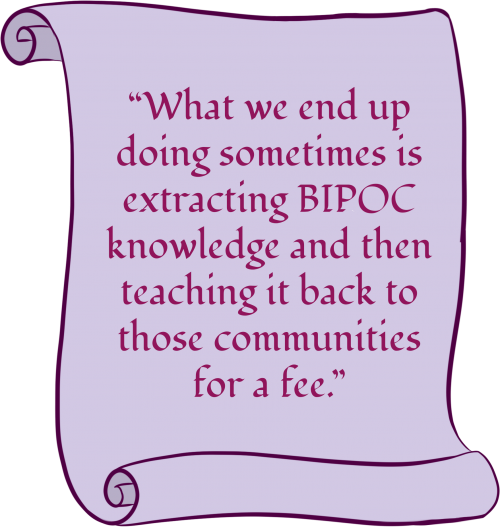
While she enjoys learning about Black and Indigenous perspectives, such as what they did in that class, she says there’s a lack of teaching about other cultural and racial groups. “It definitely hits home a bit differently when it’s about your people.” She says there’s a deeper impact on her learning when hearing about what people with a similar life experience to her are going through.
Huda adds that the knowledge from her own experiences has helped her with her assignments, such as by using her cultural background in writing her social work essays. Huda wants to work within the Muslim community after graduation and hopes that having that cultural knowledge will help her relate to and better address the issues that people from her own community are experiencing.
The 2019 University of New Brunswick study says research in curriculum planning and lesson implementation suggests that students become more involved in a lesson and face the challenges of learning new concepts if their cultural heritages, social contexts and background experiences are critically taught. If students’ lived experiences are included in the classroom, there’s a possibility that they can better succeed academically, the study says.
Chapman says she’s learned about the ways that Eurocentric and Western values have been adopted in the social work field. However, the students aren’t necessarily taught how to cater to different cultural needs and how to put those kinds of teachings into practice.
Chapman was born and raised in Guyana, and says she’s seen the suffering of the people in that country and how that contrasts to those in Canada. In Guyana, she saw people sleeping on the streets on top of garbage, homes being separated by sheets and those in the queer community being discriminated against and killed. In her experience, there’s been no education on how to approach someone that has experienced that kind of adversity.
She says that as much as they’re told to avoid bulldozing through marginalized communities with white saviourism, the lack of education they receive on properly working with these communities teaches them otherwise.
White saviourism is when white individuals are positioned as the servers and BIPOC communities are positioned as objects of the service, as defined in a 2019 Merrimack College study. Through this complex, white privilege is reproduced while BIPOC communities continue to be oppressed through cultural, institutional and individual forms of racism, according to the study.
A famous example of white saviourism’s influence in the field of Canadian social work can be found in The Sixties Scoop. It refers to a series of policies enacted by provincial child welfare authorities starting in the mid-1950s that saw thousands of Indigenous children taken from their homes and families, which were often stable and loving but deemed “insufficient” by white middle-class social workers, and placed in foster homes and adopted out to white families across Canada and the United States, according to CBC. The practice continued into the 1980s. These children lost their names, languages and a connection to their heritage. Like the residential school system, the Sixties Scoop was part of a broader plan to assimilate Indigenous people into Western Canadian culture, and caused immense damage and intergenerationaul trauma.
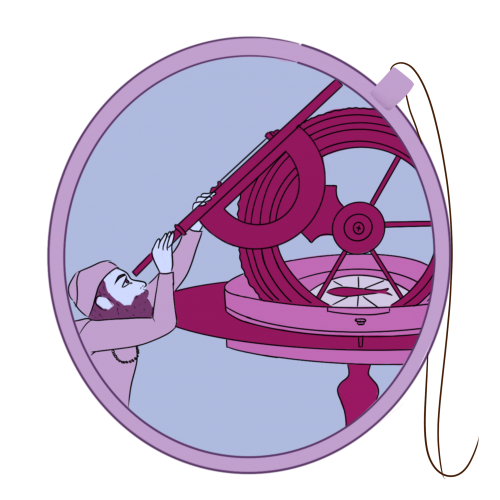
The social work field is a site of whiteness and privilege, says Elizabeth Beck, a white social work educator at Georgia State University, in an interview with Social Work Helper. She says that rather than seeing marginalized communities as experts, social workers instead reproduce positivism—a theory that knowledge can be scientifically verified or is capable of logical proof—and gatekeeping. She says she hopes to provide students with the ability to deconstruct knowledge, rather than just accept the knowledge derived from white methods and ways of knowing.
Chapman notes that most social work students don’t really get to learn about other approaches from BIPOC unless they’re taking a specific class about it, which she says can be hard for some to do on top of mandatory classes and other electives. She says BIPOC-focused courses weren’t electives that easily worked into her schedule. She usually takes 5 to 6 courses per semester and used to volunteer in her community in Durham, making it harder for her to be in Toronto to attend the classes.
For the times she’s experienced learning BIPOC-centred content in the social work classes she’s taken, it’s been in comparison to Western ways of knowing. This has looked like professors not only discussing how Eurocentric values have negatively impacted racialized communities, but also the ways in which they “benefited” them.
Sheila Sampath, activist, creative professional and professor in the digital communications program at Humber College, says BIPOC knowledge is often taught as alternative ways of knowing, reinforcing that Westernized knowledge is the deafult. She adds that it can be helpful for students who first need that framework in order to learn from it, but in other instances, it can come from a racist standpoint if a professor teaches it as, “this is the way the world works, but some people believe this other thing.”
For Sampath, BIPOC-focused teaching isn’t about bringing academic institutions into marginalized communities, but rather honouring the knowledge that’s already held in those groups and using academic institutions as a way of formalizing and validating that expertise.
Sampath teaches classes in design and sees the classroom as a collaborative conversation. What this looks like for her is using academic spaces as a place to exchange and recognize that BIPOC knowledge is worthy of study and that BIPOC can already be experts without a Western stamp of approval.
While she’s given an established course description, she creates the content and chooses how she implements it. In her classrooms, BIPOC students would talk about the work being done in their communities and the class would have a conversation about what it means to critique that work through a white gaze. “Effectively what we end up doing sometimes is extracting BIPOC knowledge and then teaching it back to BIPOC communities for a fee,” Sampath says. “That is an extractive and exploitative process.”
She adds that it’s problematic that academia enforces the idea that a professor is an expert. “I go into a classroom thinking that students are also keepers of their own knowledge.” She tries to keep in mind how she can shift from an expert to a facilitator of knowledge exchange between people.
She says this could mean physically setting up the classroom so that there’s not a clear leader. It could also mean having students speak to some of their own lived experiences, validating and connecting them to more formalized theory.
Critical self-reflection can also be a useful decolonizing tool, according to the 2018 article, as it asks people to interrogate assumptions about what knowledge is assigned value in Western institutions and to see how that knowledge may be “harbouring injustice and racism.”

ast semester, Chapman made her way into the Victoria Building for her third-year social work class on decolonization.
Before starting the class, the professor looked at the rows of desks and said the setup didn’t work for her. Her class was about decolonizing, and decolonization had to start in the classroom.
She felt that the typical classroom set up in rows doesn’t make for a welcoming environment for students, especially for those who sit in the back, because it creates a stigma that only the “good” students sit in the front and “bad” students sit in the back. Instead, she wanted to create a space that was equally occupied.
And so the professor, with the help of the students, reorganized the physical space. They moved the desks into a circle with no front or back of the classroom. Both the professor and the students could walk around the room. Chapman says this environment fostered a more inclusive and comfortable space where students could speak freely and teach each other, rather than being afraid to ask questions.
Looking back, Chapman says it helped her better understand the course content as well as be more engaged in the class because she could physically see everyone and therefore more easily interact with them. She says the discussions were very conversational and they never ran into issues with students talking over one another because they did a “popcorn” style discussion, where students could freely add on to other students’ ideas in a respectful way. “It’s just those little changes that actually matter,” Chapman says.


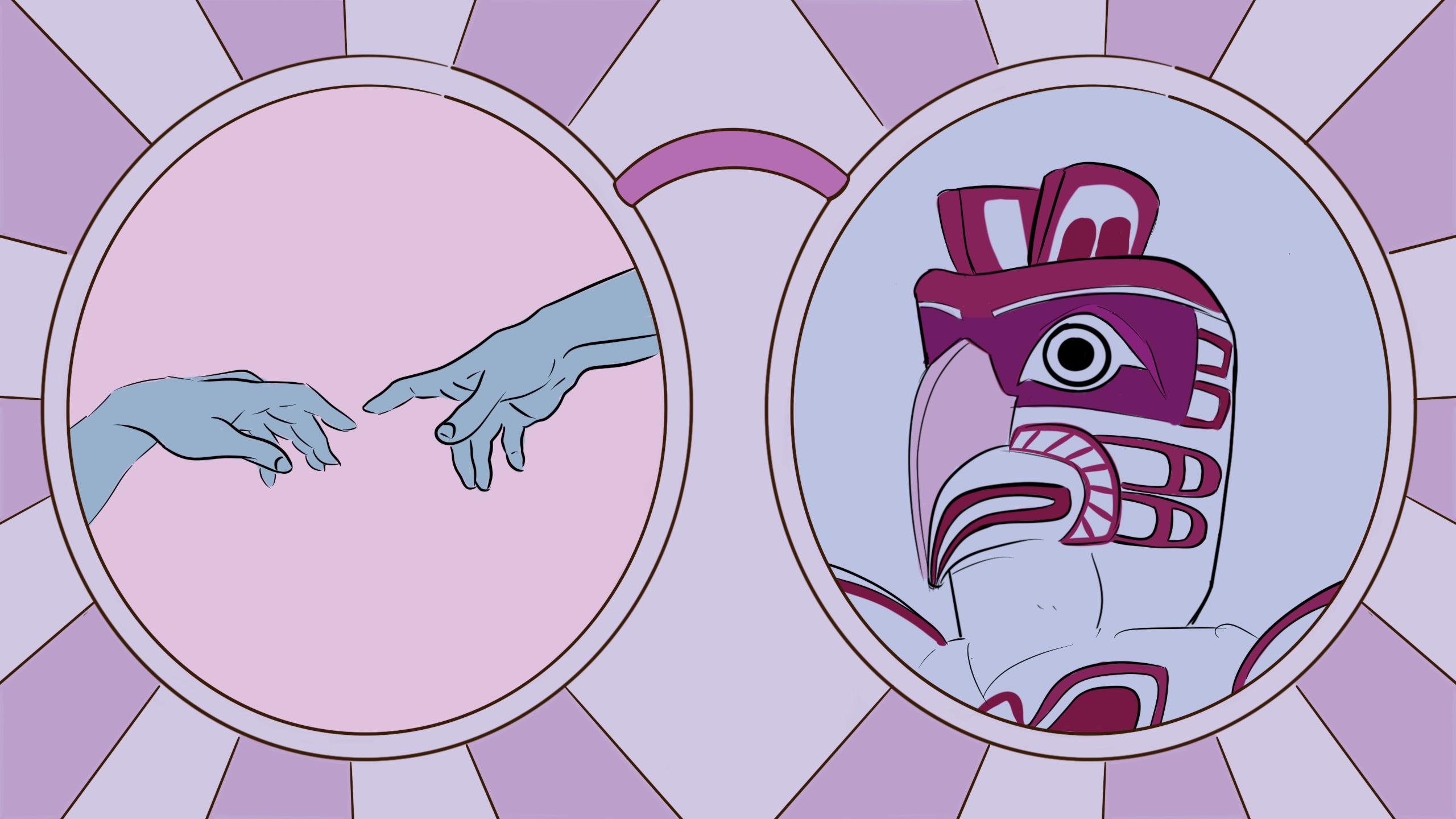








Leave a Reply